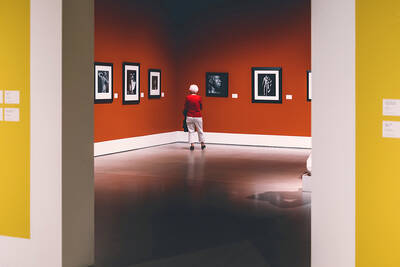The ubiquitous coin toss is not so random after all, and can easily be manipulated to turn up heads, or tails, a Canadian study has found.
Used for centuries to settle feuds, start sporting matches, decide an uncertain course of action, and even as a randomization tool in some research studies, coin tosses were thought to be impartial arbiters.
Not so, say researchers at the University of British Columbia in westernmost Canada who found that the outcome of a coin toss can actually be influenced with minimal training.
They asked 13 participants in Vancouver to each flip a coin 300 times to see if they could bring up heads.
Achieving more heads than tails was plain sailing for most of the participants, with seven of the 13 coming up with “significantly more heads” than tails, said the study published in the current Dec. 7 issue of the Canadian Medical Association Journal (CMAJ).
One of the participants was able to achieve heads 68 percent of the time.
Success depended on how high a coin was tossed, how quickly it was tossed it, how many times it was spun and how it was caught.
“This study shows that when participants are given simple instructions about how to manipulate the toss of a coin and only a few minutes to practice this technique, more than half can significantly manipulate the outcome,” the researchers wrote.
The study was included in the CMAJ’s annual Christmas holiday review of offbeat research.
Another study found that public health officials must come up with scarier names for viruses in order to frighten people into taking preventive health measures to curb epidemics.
“H1N1 sounds like the name of an income tax form or a robot that might hang out with R2D2 in Star Wars,” said researchers. “Compare this to the Black Death.
“If public health physicians want people to live, they must learn how to scare them to death.”(AFP)
加拿大一項研究發現,被廣泛用來決定事情的「擲硬幣」,其結果一點都不隨機,而是能輕易地被操縱成正面或反面朝上。
幾世紀以來,擲硬幣一直被認為是公正的仲裁方法,用以解決紛爭、決定運動比賽攻守順序、確定猶豫不決的行動方針,甚至在一些學術研究中做為隨機取樣的工具。
但加拿大西岸的英屬哥倫比亞大學的研究學者表示,事實並非如此,他們發,只要一點練習便可影響擲硬幣的結果。
他們在溫哥華找來十三名受試者,請他們各自投擲一枚硬幣三百次,觀察投出正面的次數。
這項刊登在十二月七日最新一期《加拿大醫學協會期刊》(CMAJ)的研究指出,多數受試者都能輕鬆擲出正面多過反面的結果,十三人中有七人出現「正面明顯多過反面」的情況。
其中一名受試者擲出正面的比例達到六成八。
成功的關鍵在於硬幣投擲的高度、速度、翻轉的次數,以及接住的方式。
「這項研究顯示,受試者經過簡單的操縱擲幣技巧指導後,只需練習幾分鐘,超過半數的人都能成工操控投擲結果。」
這項研究刊登在《CMAJ》的年度耶誕假期非正統研究評論中。
還有一項研究發現,公共衛生官員一定得替病毒取個更嚇人的名字,才能讓民眾採取衛生預防措施,遏止疫情傳播。
研究學者表示:「和黑死病比起來,H1N1這名字聽起來就像是所得稅表格,或是會和《星際大戰》裡的R2D2一起玩的機器人。」
「如果公共衛生醫生希望人們長壽,就得先學會怎麼把他們嚇個半死。」
(法新社╱翻譯:袁星塵)

A: The 2025 World Masters Games will begin on May 17 and run until May 30. B: World Masters Games? A: It’s a quadrennial multi-sport event for people over 30, which will be jointly held by Taipei and New Taipei City. B: Cool, maybe we can go cheer for all the athletes from home and abroad. A: There will be an athletes’ parade in downtown Taipei prior to the opening ceremony on Saturday. Let’s go then. A: 2025雙北世界壯年運動會5月17日開幕,持續至5月30日閉幕。 B: 世壯運? A: 這是四年一度、以30歲以上青壯年為主的運動會,本屆是由台北市和新北市共同舉辦。 B: 好酷喔,我們去幫來自國內外的選手們加油吧! A: 週六在台北市區會有選手遊行,之後是開幕典禮,我們去看吧。 (By Eddy Chang, Taipei Times/台北時報張迪)

A: Where will the 35 sports of the 2025 World Masters Games be held? B: Apart from Taipei and New Taipei City, some games will take place in Yilan County, Taoyuan County, and Hsinchu County and City. A: The news says about 25,000 people, including many celebrities and sports stars, have already registered for the games. B: Even Taipei Mayor Chiang Wan-an, who is 47, registered for softball and squash. New Taipei Mayor Hou You-yi, who is 68, also registered for table tennis. A: And it will be the largest sports event ever in Taiwan’s history. How exciting. A:

After the death of Pope Francis on April 21, the Vatican’s papal conclave on May 8 elected a new leader for the Catholic Church. Chicago-born Robert Francis Prevost, who chose to be called Leo XIV, became the 267th pope, spiritual leader of the world’s 1.4 billion Catholics. But what exactly does a pope do? Here is a rundown of his main responsibilities. CATHOLIC LEADER The word pope comes from the Greek “pappas,” meaning “father, patriarch,” which is why believers call him the Holy Father. He is considered the successor of St Peter, to whom Jesus Christ is said to have entrusted

Have you ever wondered who decides what we see in a museum or how one artwork seamlessly connects to the next? Behind every thoughtfully arranged gallery space stands a curator, a skilled professional who combines art and storytelling to craft meaningful experiences. The term “curator” originates from the Latin word cura, meaning “to care.” Curators were originally caretakers of museum collections, but over time, their role has grown to include a broad range of responsibilities that extend far beyond preservation. Today, curators manage, organize and interpret collections in cultural institutions like museums and libraries. They research, acquire and catalogue